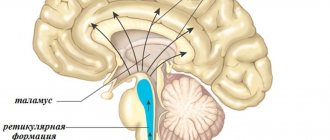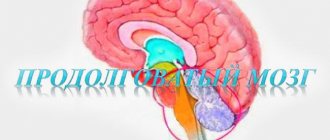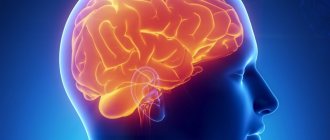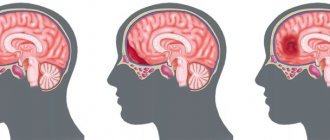Dog: a look from the inside. Animal Brain Research
To gain a deeper understanding of dog behavior, we need knowledge about the structure and functioning of the brain. Dog behavior in the light of neuroscience discoveries. History of psychology from behaviorism to the present day. What is trauma? Stress reaction.
New canine science was able to emerge on the basis of new research on dogs, but with the support of researchers from other related disciplines, primarily neuroscience.
Behaviorism and modern psychology
In order to thoroughly study the behavior of animals, thousands of hours of observation in their natural habitat are needed, which is difficult in itself. The problem is that the interpretation of only observed animal behavior is quite subjective, that is, it depends on the researcher’s attitudes. That is why ethology is always under the influence of the dominant ideology in society. Remember, for example, the work of the American scientist, founder of behaviorism, B.F. Skinner: he worked in an era when emotions were considered unacceptable, they tried to drive them out of human communication. Skinner believed that it was necessary to study only the visible behavior and ignore the inner life of animals. As a result, scientists simply did not have the right to describe the rational and emotional behavior of animals and adjusted their description to the officially approved explanation. Thus, animals in the eyes of society have become some kind of biomachines with their conditioned and unconditioned reflexes. Russian scientists also adhered to Skinner's opinion, since he was in many ways a follower of the Russian scientist Pavlov.
Unlike American and Russian researchers, European animal psychologists, primarily Konrad Lorenz, did not ignore the emotions and intelligence of animals. They said that the inner life of animals must be taken into account along with their reflexes. They studied the behavior of various animals and compared it in order to understand the general biological basis of animal behavior in general (the direction of “Comparative Animal Psychology”).
This work allowed us to make many important discoveries. But confirmation of their correctness, as well as the completeness of the research, became possible only when technical means appeared to study the internal life of the brain - hormones, neurotransmitters, neurons and their connections.
While animals were studied only in laboratories and publications about research were subject to certain censorship, it was still possible to maintain the myth of the absence of inner life in animals. In the 70s of the twentieth century, animals began to be observed all over the world in their natural habitat, and it became impossible to hide the truth. The first researcher to break the wall of silence about the minds and emotions of animals was the American professor Griffin. Since then, an open war began between the adherents of behaviorism and the followers of comparative zoopsychology. This war is only ending now, when many branches of natural science are experiencing a rebirth.
During the reign of behaviorism, a mechanical approach also developed in cynology, which led to a real disaster.
Let's take, for example, the way of interpreting Pavlov's famous formula: stimulus - response. According to the mechanical interpretation, the impact on the dog causes some kind of physical reaction, for example, following a command. However, a dog's brain is not a mop (stepped on one end, a reaction occurred on the other). The brain is made up of billions of neurons. They are all interconnected by a huge number of connections. These connections pass through many specialized centers in the brain. Therefore, any impact on a dog depends on its internal state and causes a variety of reactions - both external and internal. The dog reacts to any influence not only with action, but also with emotions, thought processes, and it develops associations with the owner and the entire environment. As a result, she learns not only the desired action, but also her emotional state at the time of learning, she draws conclusions regarding the quality of contact with the owner, etc. All this, in turn, affects her motivation to work and follow the learned command in the future. It turns out that when working with a dog, it is important to create a friendly environment in which the dog learns with pleasure. When punishment is applied, the dog learns to achieve its goal on the sly.
Second example: all social mammals have a so-called social brain. The social brain is the areas of the brain involved in social life. Knowing the properties of the social brain and its structure, one can deeply understand how much a dog’s physical and mental states depend on the quality of its contact with a social partner. This, in turn, allows us to understand how strongly the dog is motivated to adapt its behavior to the needs of the family, including learning the commands needed by the owner. The only difference is the degree of independence of one dog or another.
Brain research confirms canine scientists' observations that social behavior is the same in dogs of all breeds - whether they are companion dogs, working dogs or "independent" herding dogs. All of them need full integration into the family, which means constant opportunity to communicate with other family members and an understanding of their need for the family.
On the other hand, knowledge about the social brain allows us to understand how hard a dog tolerates isolation. According to research by Swedish dog handler Anders Hallgren, working dogs that are kept in enclosures and have the opportunity to communicate with people for only a few hours become mentally unstable and perform their work worse.
Probably everyone knows about crazy “chain dogs”. People are forced to endure the irrepressible, hysterical barking of dogs behind fences in villages: this barking reveals the unbalanced mental state of social animals excluded from social life.
Many people think that nothing bad will happen if they pull the leash once or twice or at least sometimes use a strict collar for testing. We can go to training sessions for months where we will be taught to treat our dog harshly. But we will assume that the dog will be patient, and in general “nothing bad will happen.” Moreover, we have already paid for the course.
Stress and psychological trauma
Knowledge about the life of neurons shows the susceptibility of our dogs: severe exposure to stress, for example, even a single tug on a collar can create trauma that is burned into the dog's brain for many years and forever cripples your relationship with him. As one client of the “tough dog school” writes: My dog began to move away from me... It took me many months to prove my love to her.
In the brain, trauma looks like a scar—a thick tangle of stress-damaged neurons. Injured neurons extend from the scar into other areas of the brain, disrupting the life of the healthy neurons associated with them. Thus, from just one trauma, a whole complex of connections is created that preserves the memory of the trauma. This tangle protects itself chemically (which is why it is so difficult to get to the root of the problem through psychoanalysis). This puts the brain into a state of chronic stress. Trauma manifests itself in behavioral disturbances, such as vicarious behavior, avoidance behavior, unexpected reactions, sudden mood swings, sudden negative associations, self-doubt, fear, decreased concentration, decreased learning abilities, etc. In people it is also often expressed in strange statements and lies. All these reactions are called post-traumatic syndrome. It is difficult to say how traumatic this or that event will be. But understanding the risks a dog takes during aggressive training and mishandling brings home the importance of preventing injury.
Any reaction is a combination of feeling and reason. These two brain functions are physically connected and determine each other. Therefore, skepticism about the presence of reason and emotions in animals is automatically eliminated: without one there is no other. These are facts proven by neuroscience.
If we hear a word with which we associate something unpleasant, we will not explode in irritation - we will be able to suppress this reaction with our mind. The stronger the mind, the better it controls itself and the calmer it is for other people to communicate with it. The same thing happens with dogs.
Stress reactions weaken the functioning of the mind, especially when old age sets in. While the brain is calm and young, the effects of trauma are restrained by its mental functions. Once he becomes stressed and/or begins to age, the power of mental control decreases and the trauma resurfaces. This is why a behavior problem may return in a dog whose behavior seems to have already been corrected. This is why a dog that has undergone guard training (Schutzhund) is potentially dangerous - as research has shown (and as any normal person can see). Such training deeply traumatizes the psyche. For such dogs, additional obedience training or aids to help control the dog are child's play compared to the power that created trauma has on his behavior. According to Anders Hallgren, this is why the Scandinavian countries have already moved away from defense training. In Russia, on the contrary, this type of “sport” is considered something normal.
The effect of stress on a dog's behavior is not simply a state where the dog becomes agitated and we just have to wait for it to come to its senses again. As with trauma, any stress leaves traces in the brain in the form of new neuronal connections and changes their quality. The altered connections in turn affect other neurons, which in one way or another changes a fairly large part of the brain. As a result, new associations along the chain activate existing associations, etc. Pain and fear greatly change chemical processes in the brain, which, among other things, can affect the speed of reactions.
This is why we must carefully study the effects of stress and try to do everything possible to avoid causing unnecessary stress to the dog. We also need to know that any behavior therapy (and this is therapy, not “correction”) should begin with relieving stress and strengthening the nervous system (including through mental training and by creating the most comfortable living conditions for the dog, strengthening contact with owner, use of a special vitamin complex).
Puppy
We can argue for a long time when it is necessary to take a puppy away from its mother, when it is necessary to train it, how much and what efforts should be made for socialization. But all these disputes are mere chatter until we understand that the puppy himself, by his behavior (crying, physical activity, his own interest) shows what he needs and when he is ready for new stages of his life. We need to believe that the puppy is right and be able to observe him. And this confidence comes only when we understand what drives him from within - that is, how the nervous system works and how it develops.
Once with the owner, the puppy finds himself in a completely different world. The connections between the nerve cells of his brain that corresponded to his life with his mother become no longer necessary. Therefore, they are destroyed, and new ones are formed instead. This process takes several weeks or even months and covers up to 70% of his brain volume. The same thing happens with newborn children. Imagine if you, having read “canine literature”, immediately after purchasing a puppy, attack him with education, and even more harshly (you will isolate him from yourself or try to persistently teach him commands, etc.). The first thing a baby should “do” in a new home during the first weeks is to get used to it and calm down. In other words, he must change his old, now unnecessary, neuronal connections to new ones. The owner’s reactions must correspond to the puppy’s requests, education and training should take place only a few minutes a day, as if casually, in the form of soft communication.
Knowledge about the plasticity of the brain shows that despite the existence of so-called imprinting phases, to a certain extent it is possible to influence the imprinted information later. You can train dogs at any age to do anything—that’s why shelter dogs also have a chance to become full-fledged members of our families.
Dog in the light of new knowledge
The learning process is the process of reshaping the brain by developing new connections. This process largely depends on the state of the whole organism, primarily on the influence of stress. But even for a calm, motivated dog, the learning process is not straightforward. It is characterized by boom and bust phases. If the trainer does not know this, instead of pausing, he begins to get angry and punish the dog, using harsh methods, which destroys the natural process of assimilation of information and destroys motivation. Approximately the same effect is observed during adolescence, when the puppy is under the influence of hormones and “doesn’t think well.” It is at this age that many people begin to consider the dog “dominant” and try to suppress it, outrageously ignoring the severe changes in its body.
Understanding the brain makes us take our dog more seriously. We can no longer view a dog as a tool to achieve our athletic or financial goals. We will no longer believe the “animal psychologist” who advises solving the problem of loneliness or uncleanliness by ignoring the dog or putting it in a cage. We will stop jerking the dog when we want to tell him something. We will not expect sudden aggression from the dog, since we will know that as long as we have not disfigured its nervous system, until we have created negative associations, it will not become aggressive on its own (this conclusion has also been proven several times by special studies of ethologists).
The dog’s excitement needs to be controlled not by grinders, but by activities that develop the dog mentally: through mental regulation, it will be able to better control its impulses, since mental development improves the properties of the nervous system (the ability to solve problems, the ability to concentrate, gaining experience through free exploration of the world). The physical development of a dog is not only mindless frisky games, but purposeful work to improve coordination and ability to control its body.
We will stop stressing over every interaction with a dog and reading endless instructions on how to raise dogs - because we will understand that we can handle a dog more relaxed and trust our own instincts more.
We will stop endlessly pushing dry food and canned food into her, realizing how much they poison her body, including the brain as a center of perception and a generator of behavior.
We can finally understand that the motives for a dog’s behavior can be simple feelings - joy, jealousy, shame, strong desires. All these feelings are caused by ordinary simple structures of the brain - in dogs, just like in us. It is only important to understand that feelings can be simple (common to all animals and generated by simple processes in the brain) - and complex (presuming the presence of particularly developed mental abilities and which our dogs may not be capable of, for example, revenge on the owner).
Thus, new knowledge creates a joyful mood in communication between a person and a dog and cleanses us of centuries-old canine dust.
Recommended reading
For those who have already read books from our publishing house and would like to study animal behavior and brain function in more depth, we recommend the following books:
- Joachim Bauer. Why do I feel what you feel? Intuitive communication and the secret of mirror neurons.
- Joachim Bauer. The principle of humanity. Why are we naturally inclined to cooperate?
- Norman Doidge. Brain Plasticity: The amazing facts about how thoughts can change the structure and function of our brain.
- Mark Hyman. Brain. Feedback.
- Daniel Goleman. Emotional intellect.
- Chris Frith. Brain and soul. How nervous activity shapes our inner world.
- Ivan Pavlov. Freedom reflex.
- Lorna Coppinger, Raymond Coppinger. Dogs. A new look at the origin, behavior and evolution of dogs.
- K. E. Fabry. Fundamentals of zoopsychology.
- Konrad Lorenz. Aggression.
Author: Olga Kazharskaya, Dogfriend Publishers.
Neuron structure
The figure shows the structure of a neuron. It consists of a main body and a core. Numerous fibers branch off from the cell body, which are called dendrites.
Powerful and long dendrites are called axons, which in reality are much longer than in the picture. Their length varies from a few millimeters to more than a meter.
Axons play a leading role in transmitting information between neurons and ensure the functioning of the entire nervous system.
The junction of a dendrite (axon) with another neuron is called a synapse. Dendrites, in the presence of stimuli, can grow so much that they begin to pick up impulses from other cells, which leads to the formation of new synaptic connections.
Synaptic connections play a significant role in the formation of human personality. Thus, a person with an established positive experience will look at life with love and hope, a person who has neural connections with a negative charge will become a pessimist over time.
Functions of a neuron
Despite its relatively simple structure, the neuron has many functions, the main ones of which are the following:
- perception of irritation;
- stimulus processing;
- impulse transmission;
- formation of a response.
Functionally, neurons are divided into three groups:
Afferent (sensitive or sensory). Neurons in this group perceive, process and send electrical impulses to the central nervous system. Such cells are anatomically located outside the central nervous system, but in spinal neuronal clusters (ganglia), or the same clusters of cranial nerves.
Intermediaries (also these neurons, which do not extend beyond the spinal cord and brain, are called interneurons). The purpose of these cells is to ensure contact between neurocytes. They are located in all layers of the nervous system.
Efferent (motor, motor). This category of nerve cells is responsible for transmitting chemical impulses to the innervated executive organs, ensuring their performance and setting their functional state.
In addition, another group is functionally distinguished in the nervous system - inhibitory nerves (responsible for inhibiting cell excitation). Such cells resist the propagation of electrical potential.
Types of neurons and neural connections
Neurons can be found in various human organs, not exclusively in the brain. A large number of them are located in the receptors (eyes, ears, tongue, fingers - sensory organs). The collection of nerve cells that permeate our body forms the basis of the peripheral nervous system. Let us highlight the main types of neurons.
| Type of neuron cell | What is he responsible for? |
| Affective | They are carriers of information from the sense organs to the brain. This type of neuron has the longest axons. An impulse from the outside enters along axons strictly into a certain part of the brain, sound - into the auditory “compartment”, smell - into the “olfactory” compartment, etc. |
| Intermediate | Intermediate nerve cells process information received from affector neurons and transmit it to peripheral organs and muscles. |
| Effector | At the final stage, efferents come into play and carry the team of interneurons to the muscles and other organs of the body. |
The coordinated work of three types of neurons looks like this: a person “hears” the smell of kebab, the neuron transmits information to the corresponding section of the brain, the brain transmits a signal to the stomach, which secretes gastric juice, the person decides “I want to eat” and runs to buy kebab. This is simply how it works.
The most mysterious are the interneurons. On the one hand, their work determines the presence of a reflex: if you touch electricity, you pull your hand away, dust flies, you close your eyes. However, it is not yet clear how the exchange between fibers gives rise to ideas, images, thoughts?
The only thing that scientists have established is the fact that any type of mental activity (reading books, drawing, solving mathematical problems) is accompanied by a special activity (flare) of nerve cells in a certain area of the brain.
There is a special type of neurons called mirror neurons. Their peculiarity lies in the fact that they not only become excited by external signals, but also begin to “move”, observing the actions of their fellow neurons - other neurons.
What part of the brain does a person use?
It is the brain that determines how a person perceives the world around him. On average, it weighs about 1.5 kg and consists of 100 billion neurons - cells that perceive and transmit information [1].
Content:
- What part of the brain does a person use?
- How did the myth of 10% come about?
- Is it possible to improve brain function?
- Other common myths
- Interesting Facts
As a recent survey of American scientists showed, almost 56% of their compatriots believe that Homo Sapiens uses only 10% of its brain [2]. And we must admit, this belief is very widespread not only in the United States. In fact, this is nothing more than a myth, and neurologists debunked it long ago. Most of the organ is active almost all the time [3]. Scientists conducted research on this topic back in 2009 [1].
Using the capabilities of functional MRI, specialists measured the activity of the organ during the performance of various tasks, and determined that most of the brain remains active almost constantly, even when a person performs very simple actions. Moreover, the organ is awake even when a person is resting or sleeping. But the exact percentage of organ cells that are activated varies from person to person. This indicator also changes depending on what a person does or thinks about.
Synaptic plasticity
A synapse is the gap between two neurons where they exchange information. The active neuron releases neurotransmitters into the synapse, which tell the passive one what to do: activate or remain passive. There are about one hundred billion neurons in our brain, each of which is connected to thousands of others, and the process of “communication” between them takes a fraction of a second. Synaptic neuroplasticity is the “habituation” of neurons to the fact that a particular neuron often excites its “neighbor”. In other words, if neurons communicate frequently, they want to do it more and more often. Just like people.
If this happens to many neurons in one area, entire “teams” of neurons appear—neural networks. This is how memory or new skills are formed. We teach “teams” of neurons to communicate, activating them again and again with our stimulation (we learn to ski, for example), and at some point the connection of the “team” becomes strong and the body easily repeats familiar movements.
On the contrary, if we do not use previously familiar skills for a long time, the paths become overgrown - neurons in this area communicate less frequently, and the connections between them weaken. This is how we forget a foreign language we don’t need, and the patient who finds himself on tube feeding forgets how to swallow. It would seem that there is only harm from this phenomenon, but no: this is how you can, for example, wean yourself from prejudices (by an effort of will, stop thinking badly about people of another nationality) and even ease depression. Cognitive therapists suggest that patients find the usual “paths” along which their depressive thoughts go, and trample others in their place, and leave these ones to “overgrow.” And it works.
What is a neuron (neural connections)
Translated from Greek, neuron, or as it is also called neuron, means “fiber”, “nerve”. Neuron
- this is a specific structure in our body, which is responsible for the transmission of any information within it, in everyday life called a nerve cell.
Neurons operate using electrical signals and help the brain process incoming information to further coordinate the body's actions.
These cells are an integral part of the human nervous system, the purpose of which is to collect all signals coming from outside or from one’s own body and make a decision about the need for one or another action. It is the neurons that help cope with this task.
Each of the neurons has a connection with a huge number of the same cells, a kind of “web” is created, which is called a neural network. Through this connection, electrical and chemical impulses are transmitted in the body, bringing the entire nervous system to a state of rest or, conversely, excitation.
For example, a person encountered a certain significant event. An electrochemical impulse (impulse) of neurons occurs, leading to the excitation of the uneven system. A person’s heart begins to beat faster, their hands sweat, or other physiological reactions occur.
We are born with a given number of neurons, but the connections between them have not yet been formed. The neural network is built gradually as a result of impulses coming from outside. New impulses form new neural pathways; it is along them that similar information will flow throughout life. The brain perceives each person's individual experience and reacts to it. For example, a child grabbed a hot iron and pulled his hand away. This is how he developed a new neural connection.
A child develops a stable neural network by the age of two. Surprisingly, from this age those cells that are not used begin to weaken. But this does not in any way interfere with the development of intelligence. On the contrary, the child learns about the world through already established neural connections, and does not aimlessly analyze everything around him.
Even such a child has practical experience that allows him to cut off unnecessary actions and strive for useful ones. This is why, for example, it is so difficult to wean a child from the breast - he has formed a strong neural connection between the attachment to mother's milk and pleasure, safety, and calmness.
Learning new experiences throughout life leads to the death of unnecessary neural connections and the formation of new and useful ones. This process optimizes the brain in the most efficient way for us. For example, people living in hot countries learn to live in a certain climate, but northerners need a completely different experience to survive.










